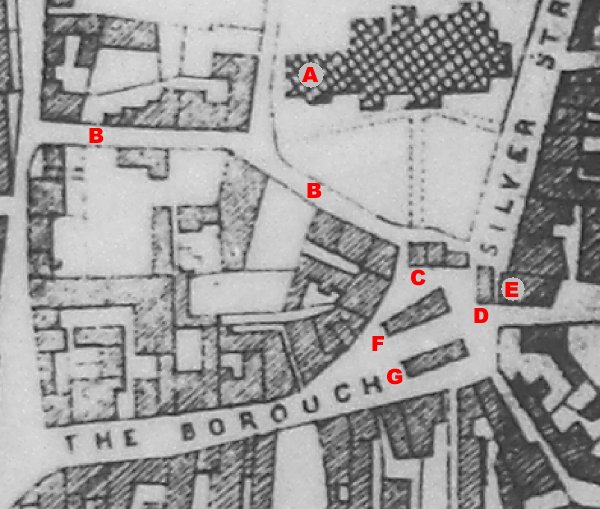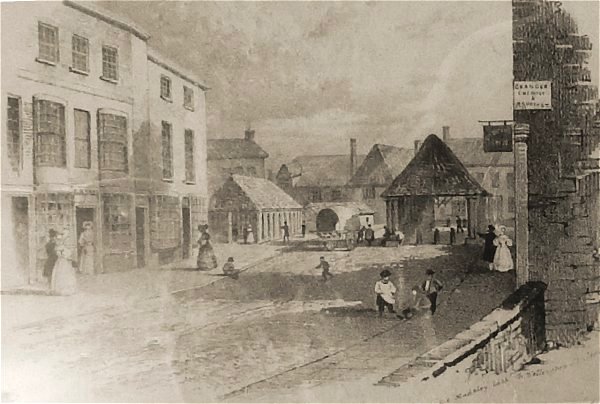The market house
the market House
A permanent covered structure for market traders
The Market House stood in the Borough and was built in 1740 by Lady Elizabeth Phelips of Montacute House. It stood near the southeast corner of the Borough, close to the entrance of Wine Street, then known as Grope Lane.
Essentially a tiled roof on twenty stone pillars, it was open on all sides but offered some small protection from the elements for street traders. The building was 70 feet long by 20 feet wide (21.3m x 6m). The stocks were house within the structure.
"We hear that the Inhabitants of Yeovil, on account of the Repeal of the Cyder-Act, and the Prohibition of the Importation of French Gloves, (Gloving being the principal Trade of that Town) have devoted the greatest Part of the last Week to Bell ringing and other Diversions; three Sheep being roasted whole on the last three Days, and two Vessels of Cyder continually running at their Market-House." Bath Chronicle & Weekly Gazette, 1 May 1766
By the middle of the nineteenth century the Market House, as well as the adjacent Shambles, had fallen into disrepair and their demolition was the subject at the first meeting of the newly set up Special Commissioners in 1846. Both the Shambles and the Market House were demolished in 1849 with the Special Commissioners contributing £200 towards the costs.
MAP

Day's map of
1831 showing the
Borough, plus a
few associated
features;
A = The
Chantry in
original
position,
B =
Church Lane
/ Street, C =
Tolle Hall,
D = Bow,
E =
London House,
F = The
Butchers'
Shambles, G
= Market House.
gallery

This painting
features in my
book 'Secret
Yeovil'
A painting made in 1810 of the Borough looking towards High Street which runs to the distance at left. The building at centre was the Market House, built in 1740, and behind it to the right was the butcher's Shambles, built in 1803. The Tolle Hall is seen at right, surmounted by its clock or 'horolitch'. At left, the building with the arched ground floor is the only building surviving today in the Borough and originally the ironmongery shop of William Edwards, then Josiah Hannam followed by James Bazeley Petter and then Hill & Sawtell. Today it is 15 High Street, occupied by Superdrug and is seen in the final photograph of this page. At extreme left is the ancient building, called The Bow (see next image) on the corner of today's Wine Street. Note, in the far right corner of the Shambles, the stocks - used for humiliating public punishment of minor offences.

This photograph
features in my
book "A-Z
of Yeovil"
This sketch, made by GE Madeley to illustrate his map of 1831, shows the Borough seen from High Street - roughly the view seen today from the north end of King George Street. The Shambles is to the left and the Market House is to the right. The buildings at far left still stand today, that to the left is Clement White's shop, today's 8 High Street, at this time occupied by draper Benjamin Ryall whose name appears above the door. Behind the hanging sign at right is the Medical Hall which at this time was occupied by George Wellington, druggist and chemist.